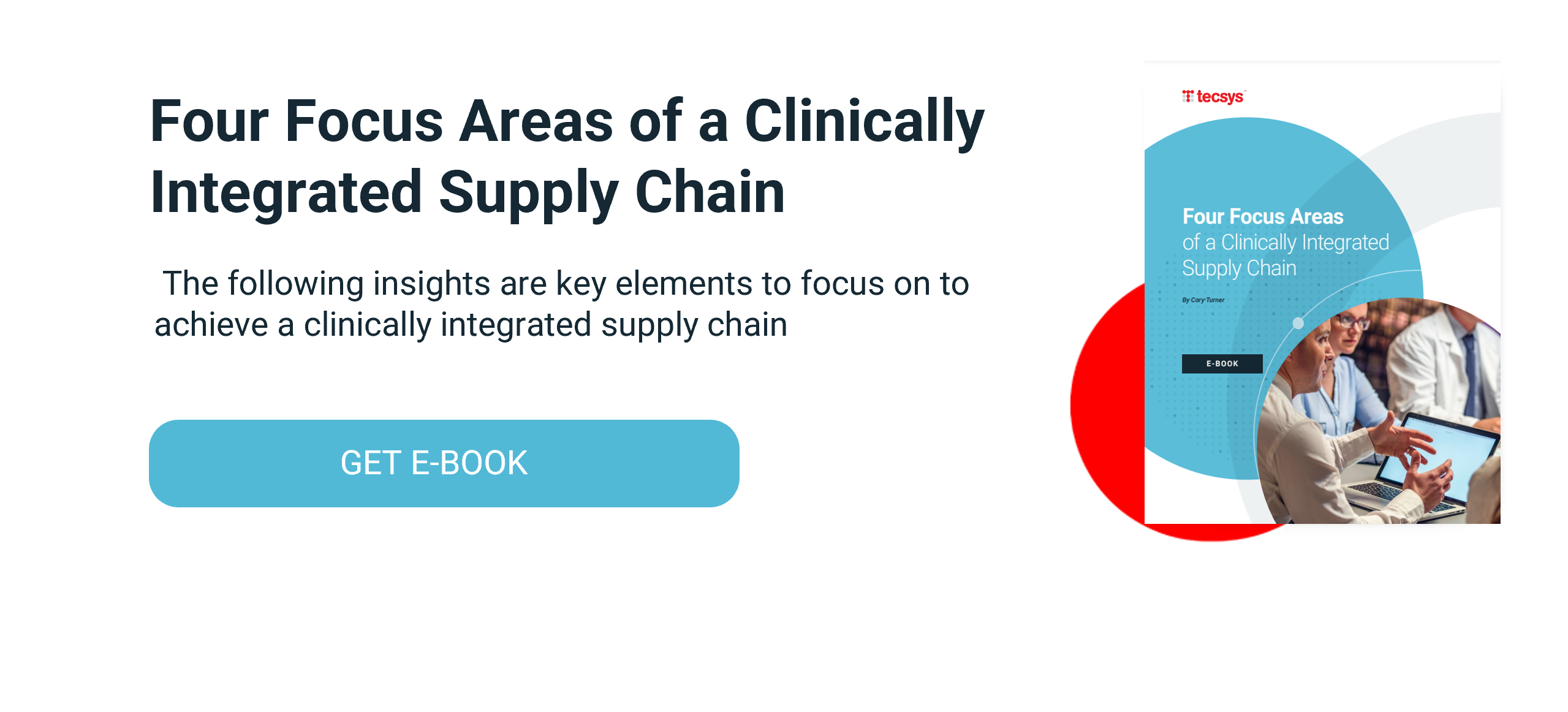Why You Need to Build a Hospital Supply Chain Strategic Plan

What's the old saying? If you fail to plan, you plan to fail. Having a hospital supply chain strategic plan in place can safeguard your organization from supply uncertainties that come down the road.
Take for instance the devastating impact of Hurricane Ian in late September. A direct hit on Florida, the nation's largest port for containers, meant supply disruptions were felt across the U.S. A Becker’s Hospital Review article cited how the weekly average of shipment volume for loads from Florida to other Southern states fell by 19% and to all U.S. states by 17%.
Supply unavailability is driven by a broad range of factors beyond natural disasters, such as raw material shortages, manufacturing disruptions, increased demand and labor shortages anywhere along the supply chain.
If your hospital can’t get what it needs in terms of products for patient care, where do you turn and what do you do? Nobody wants to be in a reactive situation where they are searching for alternate sources and items as surgical cases are delayed and clinicians are breathing down their necks.
Here are three key elements of a hospital supply chain strategic plan to support long-term supply stability for your organization.
1. Identify Key Partners
While your hospital likely has relationships with hundreds, if not thousands, of vendors, how many do you consider to be strategic hospital supply chain partners? If they anticipate a disruption, do they give you advanced warning so you can secure alternate supplies? And are you able to proactively share with them forecasting for increased demand within your organization?
The first step in establishing a hospital supply chain strategic plan is to identify those vendors that offer value beyond products, specifically the willingness and capacity to collaborate on supply resiliency for your organization.
These are the vendors that will alert you immediately of a disruption, such as a backorder, stockout or limited availability, so you can revise your distribution plan across facilities or departments or identify alternate paths of supply. In turn, you are comfortable sharing with them your demand data to signal the need for volume increases or decreases so they can plan accordingly.
2. Determine How to Collaborate
Resiliency can only be achieved by working in collaboration throughout the supply chain. So how do you collaborate with your strategic hospital supply chain partners? It’s not through phone or fax but through digital platforms and programs through which you can share supply and demand data with each other in real time or near real time, and act on this information.
Your strategic suppliers should have a strong digital footprint, including robust application programming interfaces (API) that offer visibility to their product catalogs, pricing and availability, and how they rate in terms of order health (e.g., order accuracy, on-time deliveries, backorders, etc.).
In turn your hospital should have an end-to-end digital supply chain management (SCM) solution that contains not only order data, but also product consumption data so you can easily share real-time inventory status and supply usage trends with strategic suppliers.
It’s important to make the distinction between what was purchased and what was actually used. Having a point of use (POU) system is the only way to ensure the data being sent to your partner manufacturer is meaningful.
3. Create a Contingency Response Mechanism
If you have collaborative relationships with strategic hospital supply chain suppliers in place that are based on data sharing and communication, then you can seamlessly shift with them to “Plan B” to maintain supply availability.
That’s why it’s critical to engage with your hospital’s value analysis team on supplier and product selection. If your value analysis process is evaluating items based solely on cost, you are likely missing the value a supplier can provide beyond their price tags.
Criteria for supplier selection in today’s environment should include factors such as product quality and availability, sustainable operations, reputable raw material suppliers and honest business practices. It’s not about finding the cheapest suppliers, but rather establishing the strongest partnerships for healthcare supply chain success even during challenging times.
The Road Ahead
Tecsys continues to partner with major healthcare suppliers, exploring their digital strategies and abilities to work with hospitals to improve collaboration.
We are seeing more of our customers with strong hospital supply chain strategic plans that involve the use of consolidated service centers (CSC) and self-distribution networks. By strengthening their direct ties to manufacturers, they are coming out ahead of the curve by eliminating gaps in their supply chains and bringing critical supplies closer to their doors.




